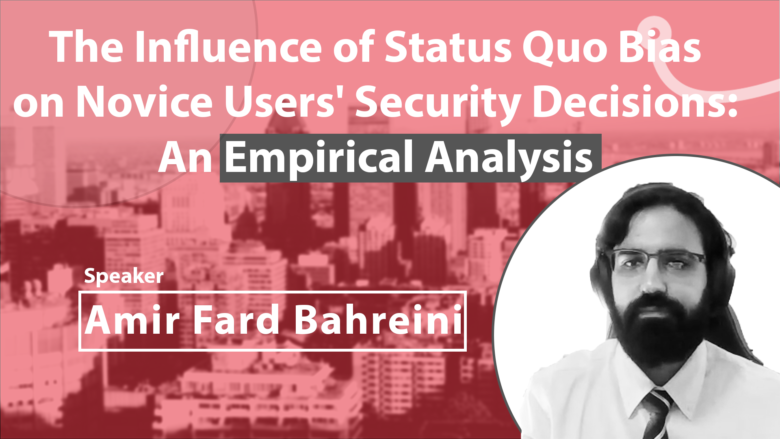Like cybercrime, large-scale cyber-attacks are overgrowing and attracting attention from both media and government agencies mainly because these attacks are often linked to threats of cyberterrorism. A misconception is to take for granted that cyberterrorism is precisely the same phenomenon as terrorism and then uses the exact definition for both phenomena. Moreover, even the definition …
Presented by Cuneyt Akcora as a part of the 2020 Serene-risc Workshop on The State of Canadian Cybersecurity Conference: Human-Centric Cybersecurity. About the presentation Proliferation of cryptocurrencies (e.g., Bitcoin) that allow pseudo-anonymous transactions, has made it easier for ransomware developers to demand ransom by encrypting sensitive user data. The recently revealed strikes of ransomware attacks …
The global pandemic in which we have been immersed for months has changed many things. Indeed, no one has been immune to periods of isolation, the risks of contagion from the virus, and unfortunately, the criminal opportunities that arose. Indeed, several waves of attempted fraud have made headlines in recent months. Fraudsters seem likely to …
La pandémie mondiale dans laquelle nous baignons depuis des mois a bouleversé bien des choses. En effet, personne n’a été à l’abri des périodes d’isolements, des risques de contagion du virus, et malheureusement des opportunités criminelles qui en sont ressorties. En effet, plusieurs vagues de tentatives de fraudes ont fait les manchettes dans les derniers …
Presented by Sanjida Tumpa as a part of the 2020 Serene-risc Workshop on The State of Canadian Cybersecurity Conference: Human-Centric Cybersecurity About the presentation Identifying individuals based on their digital footprints has gain popularity in the field of ubiquitous biometric research. Users disclose unique behavioral trails on the Online Social Networking (OSN) platforms through their …
Social networks on mobile applications are used more and more by everyone. Businesses and individuals use platforms like Twitter, Facebook, Instagram, WhatsApp, YouTube, and many others as sources of entertainment and income. However, the increase in use and public engagement on those platforms has also caused a significant increase in user privacy risks. Computers and …
Les réseaux sociaux sur application mobile sont de plus en plus utilisés par tous. Autant pour les entreprises que pour les individus, ces plateformes, comme Twitter, Facebook, Instagram, WhatsApp, YouTube et plusieurs autres sont sources de divertissements et même de revenus. Cependant, l’augmentation de l’utilisation et de l’engagement de la population sur ces plateformes ont …
Presented by Amir Fard Bahreini as a part of the 2020 Serene-risc Workshop on The State of Canadian Cybersecurity Conference: Human-Centric Cybersecurity About the presentation 40% to 60% of adults in North America have no established information security education or training. In today’s connected world, these novice users make many security-related decisions daily and are …
The number of phishing attacks continues to increase. Although citizens are more and more aware of it, this type of scam is still very profitable for criminals. A phishing-type attack aims to trick victims into clicking on a link leading them to a malicious website or one imitating a legitimate one. Once on this cloned …
Le nombre d’attaques d’hameçonnage ne cesse d’augmenter. Bien que les citoyens soient de plus en plus sensibilisés, ce type d’arnaque reste encore très profitable pour les malfaiteurs. Une attaque par hameçonnage vise à amener les victimes à cliquer sur un lien les dirigeant vers un site malveillant ou imitant un site légitime. Une fois sur …







